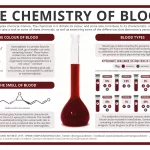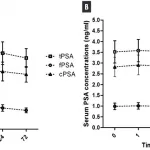If you’ve ever opened a prescription bottle and wondered “how much is really safe?”, you’re not alone. Dexamethasone is a powerhouse steroid that can calm inflammation, tame allergic storms, and even help you breathe easier, but the magic lies in getting the dose just right. Below you’ll find a friendly, step‑by‑step walk‑through that puts the numbers you need front and centre, explains why different forms exist, and reminds you of the safety checkpoints that protect you and your loved ones.
Quick Reference Table
Grab a coffee, glance at this table, and you’ll have the most common doses at your fingertips. It’s designed for both adults and children, and it separates oral from injectable routes because, let’s face it, the way you take a drug matters.
| Condition | Form | Strength (Typical) | Initial Adult Dose | Maintenance / Taper |
|---|---|---|---|---|
| Cerebral Edema | IV/IM Injection | 10 mg/mL (sodium phosphate) | 10 mg IV once, then 4 mg IM q6 h | Taper over 5‑7 days |
| Acute Mountain Sickness | Oral Tablet | 4 mg | 4 mg PO q6 h until descent | Stop when symptoms resolve |
| Chemotherapy Nausea | Oral/IV | 8 mg | 8 mg PO/IV 30 min before chemo | Repeat q12 h for 48 h |
| Multiple Sclerosis Exacerbation | Oral Tablet | 30 mg (split tablets) | 30 mg PO daily × 7 days | 4‑12 mg every other day for 1 mo |
| Allergic Reaction (severe) | IV/IM Injection | 4 mg/mL | 1‑6 mg IV/IM STAT | Repeat q2‑6 h PRN |
| Croup (kids) | Oral Syrup | 0.5 mg/5 mL | 0.6 mg/kg single dose (max 12 mg) | Single administration only |
All numbers above are drawn from the latest Drugs.com dosage guide (2025) and the NHS patient information sheet (2023). Always double‑check with your prescriber – these are starting points, not a substitute for professional advice.
Forms & Strengths
Dexamethasone comes in several guises, each tuned for a specific clinical need. Knowing which one you have in your medicine cabinet can spare you a lot of guesswork.
Tablets
Available in 0.25 mg, 0.5 mg, 0.75 mg, 1 mg, 1.5 mg, 2 mg, 4 mg and 6 mg strengths. The small 0.25 mg tablets are handy for tapering, while the 4 mg and 6 mg tablets are typically used for acute inflammation or neurological swelling.
Elixir & Oral Solution
These liquid forms (0.5 mg/5 mL) are perfect for kids or anyone who has trouble swallowing pills. The exact volume you need is calculated with a syringe – a kitchen teaspoon just won’t cut it.
Injectable Forms
- Dexamethasone sodium phosphate – 4 mg/mL, 10 mg/mL, 20 mg/mL (IV/IM).
- Dexamethasone acetate – 8 mg/mL or 16 mg/mL suspension (mostly for intra‑articular use).
Injectable strengths are used when you need rapid blood levels, such as in cerebral edema or severe allergic reactions.
Specialty Forms
Ophthalmic drops (0.1 % solution) and ointments exist for eye inflammation, while a preservative‑free elixir is often prescribed for neonates. All these variants share the same core molecule, just delivered differently.
How to Take
Getting the dose right is half the battle; taking it correctly is the other half. Below are practical tips that turn medical jargon into everyday routine.
General Rules
- Take with food. A light breakfast or snack prevents stomach irritation.
- Never split a tablet unless it’s scored. Splitting non‑scored tablets can give you an uneven dose.
- Use the supplied syringe or spoon for liquids. If you lose it, ask your pharmacist for a replacement – accuracy matters.
- Stick to the schedule. For once‑daily regimens, aim for the same time each morning. If you need multiple daily doses, the last one should be before 6 p.m. to avoid insomnia.
Adult Dosing Snapshots
For most inflammatory conditions, adults start between 0.5 mg and 10 mg per day. Severe cases (e.g., high‑grade brain swelling) can climb to 16 mg, but those high numbers are always under close medical supervision.
Pediatric Dosing Snapshot
Children’s doses are weight‑based: roughly 0.02‑0.3 mg per kilogram per day, divided into 3‑4 doses every 6‑8 hours. For croup, a single oral dose of 0.6 mg/kg (max 12 mg) does the trick—no need for a multi‑day regimen.
Real‑World Example
Meet Emma, a 4‑year‑old with a nasty bout of croup. Her pediatrician prescribed 0.5 mg/5 mL dexamethasone syrup. Emma weighs 15 kg, so the calculation goes: 0.6 mg/kg × 15 kg = 9 mg total. At 0.5 mg per 5 mL, that’s 90 mL of syrup—a single sip that calmed her airway within hours. (These numbers mirror the IWK pediatric chart, 2025.)
Condition Specific Dosage
Every condition has its own rhythm, and the dosage “dance” follows that rhythm. Below you’ll find the most common scenarios, each broken down into bite‑size instructions.
Cerebral Edema
Start with a 10 mg IV bolus of dexamethasone sodium phosphate, then continue 4 mg IM every six hours for 2‑4 days. After the acute phase, taper gradually over a week to avoid adrenal suppression.
Acute Mountain Sickness
Take 4 mg PO or IM every six hours until you’ve descended to lower altitude. Many trekkers keep a small tablet bottle in their pack for just this purpose.
Chemotherapy‑Induced Nausea
Administer 8 mg orally or intravenously 30 minutes before chemo, then repeat every 12 hours for 48 hours. This timing syncs with the peak of chemo‑related emesis.
Multiple Sclerosis Exacerbation
A short, high‑dose burst works wonders: 30 mg PO daily for one week, then step down to 4‑12 mg every other day for a month. The taper protects your nervous system from rebound inflammation.
Severe Allergic Reaction
Give 1‑6 mg IV or IM immediately (STAT). If symptoms linger, repeat 1‑6 mg every 2‑6 hours as needed, but never exceed the max daily dose without doctor approval.
Pediatric Croup
One oral dose of 0.6 mg/kg (max 12 mg) is enough. The steroid reduces airway swelling within 30‑60 minutes, often sparing the child from a scary trip to the emergency room.
Neonatal Lung Maturation (pre‑term infants)
Administer 0.5 mg IM to the mother every 12 hours for two days before delivery. This protocol, outlined in the SA Health neonatal guideline, helps prevent hyaline membrane disease.
Tapering & Adjustments
Stopping a steroid abruptly can feel like pulling the rug out from under your adrenal glands. The body needs a gentle slide down, not a hard stop.
Why Taper?
Long‑term dexamethasone suppresses your natural cortisol production. A gradual reduction gives the hypothalamic‑pituitary‑adrenal axis time to wake up again, preventing withdrawal symptoms like fatigue, joint pain, and low blood pressure.
Typical Taper Schedule
- Day 1‑3: Reduce dose by 10‑20 %.
- Every 2‑3 days thereafter: Cut another 10‑20 % until you’re at ≤ 0.5 mg daily.
- Maintain the low dose for a few days, then stop.
When to Adjust Upward
Stressful events (surgery, infection, major emotional stress) can temporarily increase your body’s demand for cortisol. In those cases, a brief dose bump—often 1‑2 mg – 5 mg depending on severity—is reasonable, but always under a clinician’s watchful eye.
Benefits vs Risks
Every medication walks a narrow line between help and harm. Understanding both sides lets you make an informed decision.
Therapeutic Benefits
- Anti‑inflammatory power. Swelling, pain, and redness shrink quickly.
- Anti‑emetic effect. Nausea from chemotherapy becomes manageable.
- Neuro‑protective role. Reduces brain swelling that can threaten life.
Potential Side Effects
Think of dexamethasone as a double‑edged sword. Common adverse events include increased blood sugar, trouble sleeping, mood swings, and a tendency to hold onto water (edema). Long‑term use can thin bones, raise infection risk, and trigger cataracts.
Red‑Flag Symptoms
If you notice unexplained fever, severe stomach pain, sudden vision changes, or a rapid weight gain, pause the medication and call your doctor right away. These could signal serious complications.
Contra‑indications
People with systemic fungal infections, known hypersensitivity to glucocorticoids, or pregnant women (category NR) should avoid dexamethasone unless the benefit far outweighs the risk.
When to Call Your Healthcare Provider
Below are the moments that scream “pick up the phone”.
Urgent Red‑Flags
- High fever (> 38.5 °C) with chills.
- Severe abdominal pain or persistent vomiting.
- Sudden vision loss or eye pain.
- Symptoms of infection: increased soreness, pus, or swelling at injection sites.
Routine Follow‑Up
Schedule a check‑in after the first week of therapy, after any dose change, and before you start tapering. Blood work to monitor glucose and electrolytes is often recommended for longer courses.
Sources & Further Reading
The data in this guide pull from reputable, up‑to‑date sources:
- Drugs.com dosage guide (2025)
- National Health Service (NHS) patient information (2023)
- IWK Pediatric Dosing Guidelines (2025)
- SA Health Neonatal Medication Guidelines (2018)
These references are embedded throughout the article, so you can click through for deeper details whenever you like.
Conclusion
Finding the right dexamethasone dose is a balance of science, personal health, and practical know‑how. By using the quick‑reference table, understanding which form fits your situation, and following the simple administration tips, you can feel confident that you’re using this powerful steroid safely. Remember: the benefits shine brightest when you pair them with careful monitoring, a gradual taper, and open communication with your healthcare team. If anything feels unclear, reach out—your doctor, pharmacist, or even a trusted online community can help you navigate the nuances.
Now that you’ve got the cheat‑sheet in hand, why not bookmark this page, share it with a friend who’s starting a new prescription, or drop a comment below about your own experience? We’d love to hear how you’ve managed dexamethasone, and together we can make the journey a little easier for everyone.
















Leave a Reply
You must be logged in to post a comment.